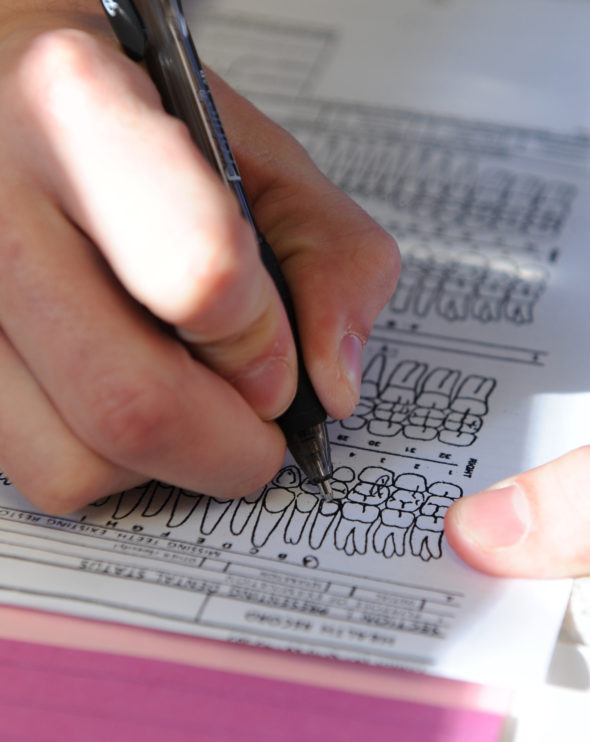 Your first experience interacting with a patient face-to-face can be a little intimidating. It may be the first time you feel like a real dentist, even though you’re still in the middle of your studies. You’ll always remember that first patient. As your clinical knowledge grows, you may even think back to how that first visit could have gone smoother. Despite all the pre-clinical training we receive, interacting with real patients is different than sitting in a lecture with other students. First and foremost, be confident. Gaining rapport and cooperation from the patient is easier when you approach them with a calm, knowledgeable demeanor. A patient who feels comfortable with your abilities is more likely to agree to your treatment plan and sit through a procedure.
Your first experience interacting with a patient face-to-face can be a little intimidating. It may be the first time you feel like a real dentist, even though you’re still in the middle of your studies. You’ll always remember that first patient. As your clinical knowledge grows, you may even think back to how that first visit could have gone smoother. Despite all the pre-clinical training we receive, interacting with real patients is different than sitting in a lecture with other students. First and foremost, be confident. Gaining rapport and cooperation from the patient is easier when you approach them with a calm, knowledgeable demeanor. A patient who feels comfortable with your abilities is more likely to agree to your treatment plan and sit through a procedure.
Here are six tips to make the first experience a positive one:
- Before starting, double check that you have everything required for the procedure. You will work better and more efficiently when you have everything within your reach. Constantly getting up to find something or asking an assistant to do so may make your patient uncomfortable. An uncomfortable or nervous patient is less likely to cooperate during treatment.
- If anything goes wrong, the best way to deal with it is with the help of the doctor in charge. They are there to help and guide you. Don’t be a hero by trying to do everything on your own. This could cause damage to the patient’s health. A good clinician is not someone who knows it all, but rather someone who is ready to learn something new and accept help when needed.
- Read through the patient card before the appointment. It might sound funny, but a common mistake is performing a procedure on the wrong tooth. If you’re anxious or in a hurry, you might skip through this important step. Read through treatment notes and make sure you’re clear on the planned procedure before starting. This is also a good opportunity to remind yourself of any medical, psychological or dental complexities that may affect your planned procedure.
- In every situation, follow proper protocol and ethics. Evidence-based dentistry is the standard. Protocols are made based on extensive research of procedures. They are meant to teach you sound science and technique so you can provide high-quality care for your patients. You can find comprehensive information on the ADA’s evidence-based dentistry guidelines here.
- Keep calm. During your first experience with a patient, everything might not go as you expect. Things will go wrong even for experienced practitioners. Your attitude and approach to handling the situation will make a difference in your work.
The first experience may go smoothly or not. We are all still learning and constantly improving our skills. The most important thing to remember, though, is that it is not just a single tooth we are working on. We are treating a human. We should always provide the best possible treatment we can to the patient as a whole.
~ Arjun Chadha, PDM Dental College and Research Institute (India) ’18, predental member
No comments:
Post a Comment